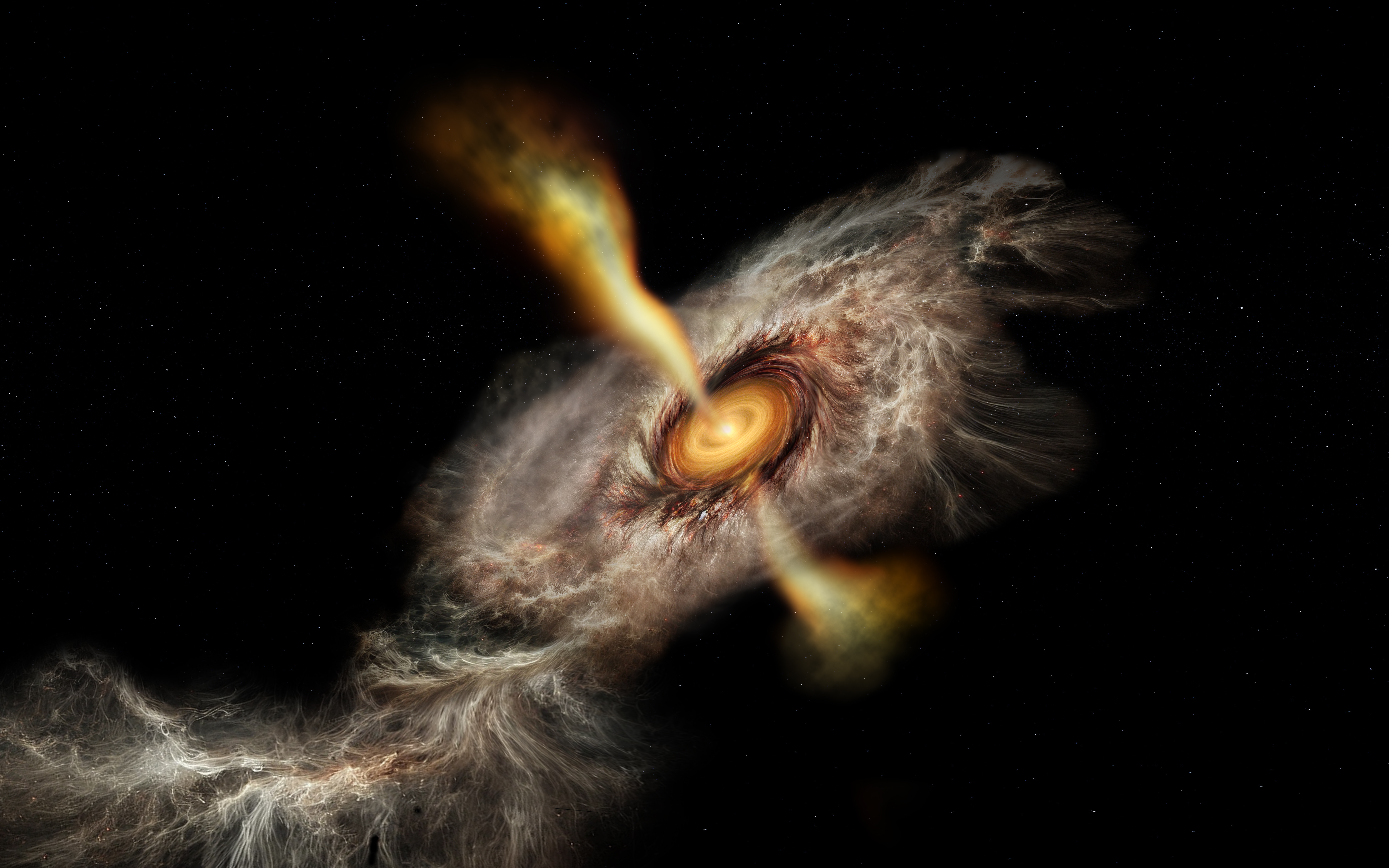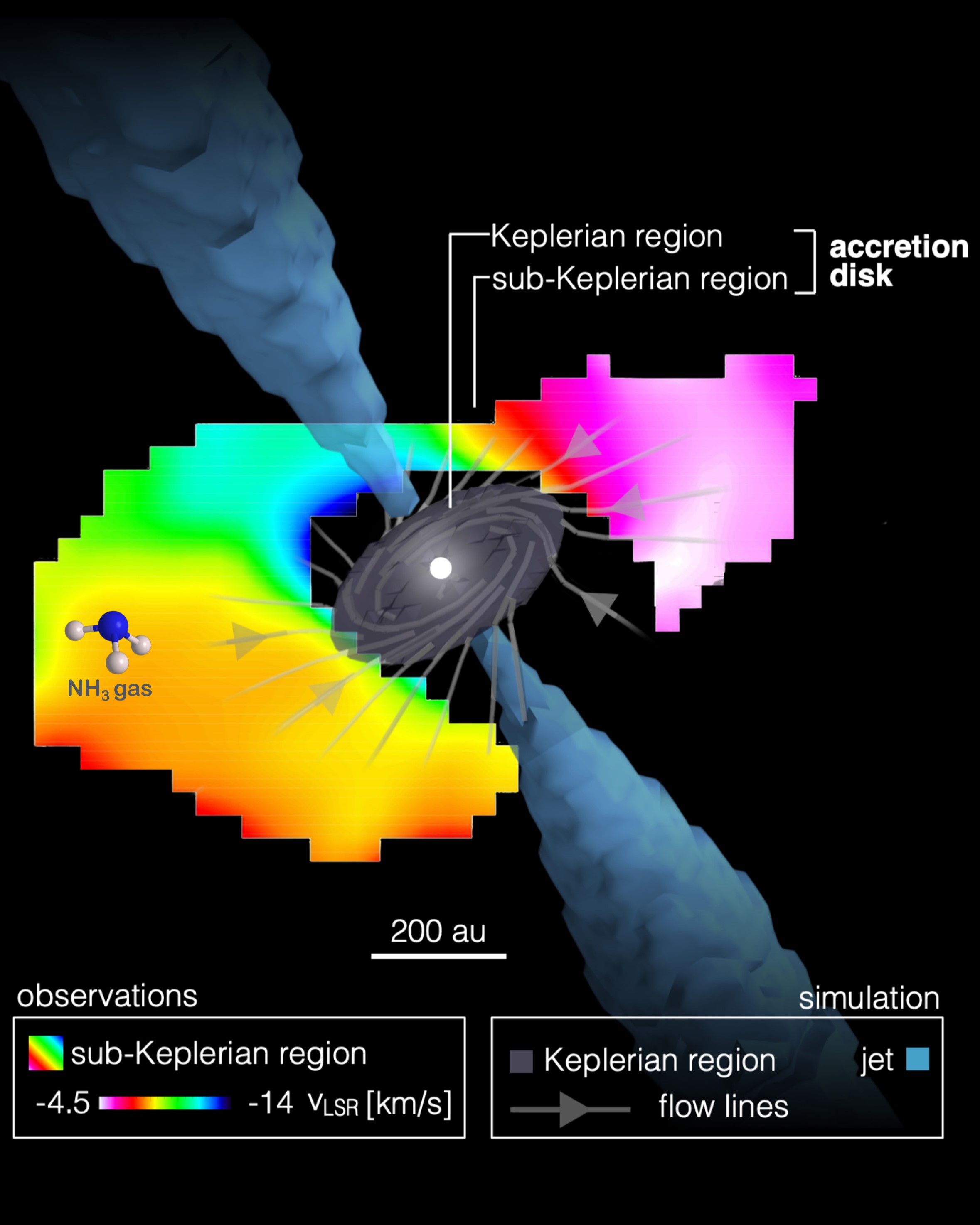Carlos Carrasco González of IRyA* is part of a research team that captured a large young star “red-handed,” growing rapidly by gathering material from a disk of gas and dust around it, much in the same way that small young stars grow.
The star HW2 is located about 2,300 light-years away in a region where massive, very “heavy” stars are forming, in the direction of the constellation Cepheus. This region, called Cepheus A, is the second closest region to Earth where stars of this mass are being born—as massive as 10 suns or more—making it very useful for studying how these stars form.
The team, including Carlos Carrasco González, studied this star using the Jansky Very Large Array radio observatory in New Mexico, USA. In particular, they observed a large ring of hot ammonia gas around this star, with a size between 200 and 700 times that of Earth's orbit around the Sun.
By analyzing this ring, they realized that it is part of a disk, spinning around the star in a very similar way to the disks surrounding the "lightest" and smallest stars. At the same time, they discovered that the gas in the ring falls toward the star, adding about twice the mass of the Sun every thousand years, which means it is growing rapidly.
To corroborate their result, the team analyzed computer simulations using recent theoretical models of star formation and found that the characteristics of the disk in the simulations—such as its size, how much gas it contains, and how fast it moves—match those observed.
This new evidence that young massive stars grow from disks around them is very important, as it means that these disks are stable despite the turbulent physical processes that occur around massive stars. It also shows that it is possible to continue rapidly adding material to young stars that are already very massive, since HW2 is currently as "heavy" as about 16 suns.
*IRyA is the Institute of Radio Astronomy and Astrophysics at UNAM, Campus Morelia, Mexico.

Image
Illustration of the gas and dust disk around young star HW2 in the Cepheus A region. Credit: Bill Saxton, NRAO
Explainer video on Youtube: https://youtu.be/Q_rRfZ5LEbg?si=gO11rYcPWXVoV8CJ
Credit: André Oliva, University of Costa Rica, University of Geneva
Top Figure
The illustration shows the accretion disk in gray color and the bipolar jets in opaque blue color, around the young massive star HW2 in the Cepheus A region. The velocity of the ammonia gas observed by the VLA is shown in rainbow colors. Credit: André Oliva / Alberto Sanna et al. 2025
Research paper
Gas infall via accretion disk feeding Cepheus A HW2
Sanna, A. ; Oliva, A. ; Moscadelli, L. ; Carrasco-González, C. ; Giannetti, A. ; Sabatini, G. ; Beltrán, M. ; Brogan, C. ; Hunter, T. ; Torrelles, J. M. ; Rodríguez-Kamenetzky, A. ; Garatti, A. Caratti o ; Kuiper, R.
Accepted for publication in Astronomy & Astrophysics
https://ui.adsabs.harvard.edu/abs/2025arXiv250215070S/abstract
Carlos Carrasco-González’s Career
Carlos Carrasco-González obtained his bachelor’s degree in physics from the University of La Laguna, Spain, and his PhD in astrophysics from the University of Granada and the Instituto de Astrofísica de Andalucía (IAA-CSIC) in 2010. Later, he was a postdoctoral researcher at the Max Planck Institute for Radio Astronomy in Bonn, Germany. He has been a researcher at the National Autonomous University of Mexico (UNAM) since 2013.
He uses radio-interferometric observations to study astrophysical jets and protoplanetary disks. In particular, he studies the magnetic field and collimation mechanisms in protostellar jets using the radio-interferometers ALMA (Atacama Large Millimeter Array) and VLA (Very Large Array). He also studies the evolution of dust and planet formation in protoplanetary disks.
Carrasco-González has been head of postgraduate studies in astrophysics at the Institute of Radioastronomy and Astrophysics (IRyA), head of the computing department, and also organizes a summer research program at IRyA for undergraduate students from Mexico and other Latin American countries.
About IRyA, UNAM
The Instituto de Radioastronomía y Astrofísica (IRyA), or Institute for Radioastronomy and Astrophysics is an academic unit at UNAM, Campus Morelia, Mexico. The Institute’s personnel perform high-level and high-impact research in the areas of interstellar medium, star formation, evolved stars, high energy astrophysics, Galactic dynamics and structure, extragalactic astronomy and cosmology. They also contribute to educate high-level human resources through a postgraduate program, and maintain a close relationship with society through diverse outreach and science communication programs.
If you are interested in our Institute, visit the English version of our webpage, www.irya.unam.mx/web/en
Media contact:
Dr. René A. Ortega Minakata
Outreach and Science Communication
IRyA UNAM Campus Morelia
Text: René A. Ortega Minakata, IRyA UNAM





